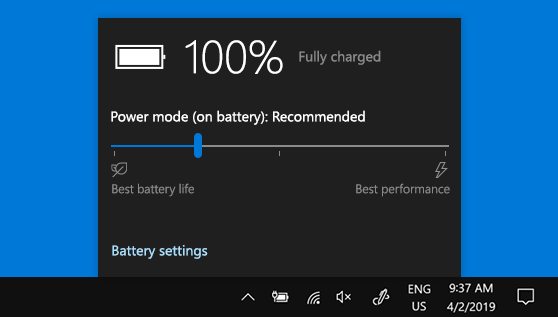Our laptops aid work, study, entertainment and so much more. Given their importance in our daily lives, taking proper care of these devices is crucial to extending their lifespan and maintaining optimal performance. Neglecting laptop care can lead to diminished functionality, costly repairs, or the need for premature replacement. By following some simple yet effective practices, you can ensure that your laptop remains in top condition for years to come.
In this article, we will explore a range of tips designed to help you maximize the lifespan of your laptop. We’ll cover essential topics such as maintaining proper ventilation, protecting against physical damage, managing software updates, and optimizing battery health. By implementing these strategies, you can keep your laptop running smoothly and efficiently, saving both time and money in the long run.
Physical Care and Maintenance
1. Handling and Transporting
Properly handling and transporting your laptop is crucial to avoiding physical damage. Always use a padded laptop bag or sleeve to protect your device from bumps and drops. When carrying your laptop, hold it securely with both hands and avoid placing heavy objects on top of it, even when it’s in a bag. Be mindful of where you set your laptop down, ensuring it’s on a stable, flat surface to prevent it from sliding or falling. If you’re traveling, be extra cautious during security checks and make sure your laptop is securely stored in overhead bins or under seats.
2. Cleaning and Dusting
Regular cleaning and dusting can prevent the buildup of dirt and grime, which can affect your laptop’s performance. Use a soft, lint-free cloth to gently wipe down the exterior and keyboard. Avoid using harsh chemicals; instead, opt for a solution of water and isopropyl alcohol. Pay special attention to the vents, as dust accumulation can hinder airflow and cause overheating. You can use a can of compressed air to blow out dust from the vents and other hard-to-reach areas. Keeping your laptop clean not only maintains its appearance but also ensures it operates efficiently.
3. Screen Care
The screen is one of the most sensitive parts of your laptop, so it requires careful handling. To clean your screen, use a microfiber cloth slightly dampened with water or a screen-cleaning solution. Gently wipe the screen in a circular motion to avoid streaks. Never use paper towels, tissues, or any abrasive materials, as these can scratch the screen. Additionally, be cautious about what you place on the keyboard when closing the laptop, as objects like pens or headphones can press against the screen and cause damage. Using a screen protector can also provide an extra layer of protection against scratches and smudges.
Battery Management
4. Proper Charging Practices
One of the key aspects of prolonging your laptop’s battery life is adhering to proper charging practices. Avoid leaving your laptop plugged in all the time, as overcharging can degrade the battery’s capacity over time. Aim to keep your battery level between 20% and 80% for optimal longevity. Deep discharges, where the battery drains completely, can also harm its lifespan, so try to recharge your laptop before it hits critically low levels. Using the original charger and avoiding cheap, third-party alternatives can further ensure that your battery remains healthy and efficient.
5. Power Settings

Adjusting your laptop’s power settings can significantly impact battery usage and lifespan. Most laptops come with power management settings that allow you to optimize performance based on your current needs. For example, using “Battery Saver” or “Eco Mode” can reduce power consumption by dimming the screen, limiting background processes, and adjusting system performance. You can customize these settings through the Control Panel on Windows or System Preferences on macOS. Reducing screen brightness, turning off unnecessary peripherals like Bluetooth and Wi-Fi when not in use, and enabling sleep mode during periods of inactivity are simple yet effective ways to conserve battery power.
6. Temperature Awareness
Extreme temperatures can have a detrimental effect on your laptop’s battery. High temperatures can cause the battery to overheat and degrade more quickly, while extremely cold temperatures can reduce its efficiency and capacity. To avoid thermal damage, keep your laptop in a cool, ventilated environment. Never leave it in a hot car or in direct sunlight for extended periods. When using your laptop, ensure that the vents are not blocked, allowing for proper airflow. If you notice your laptop getting excessively hot, consider using a cooling pad to help dissipate heat. Monitoring and managing the temperature will help maintain the battery’s health and extend its lifespan.
Software and Performance Maintenance
7. Regular Updates
Keeping your operating system and software up-to-date is crucial for maintaining optimal performance and security. Software updates often include important patches that fix bugs, improve functionality, and address security vulnerabilities. Regularly check for updates for your operating system, drivers, and applications. On Windows, you can use Windows Update, while macOS users can rely on the App Store or Software Update feature. Enabling automatic updates can simplify this process, ensuring that your laptop always has the latest enhancements and protections.
8. Virus Protection

Protecting your laptop from malware and viruses is essential for its longevity and performance. Using reputable antivirus software can help detect and eliminate threats before they cause significant damage. Make sure your antivirus software is always up-to-date and schedule regular scans to catch any potential issues early. In addition to antivirus software, practicing safe browsing habits—such as avoiding suspicious websites, not downloading files from untrusted sources, and being cautious with email attachments—can significantly reduce the risk of malware infections.
9. System Clean-Up
Over time, your laptop can accumulate unnecessary files and programs that can slow down its performance (Find out how to boost PC performance here). Regular system clean-ups can help maintain smooth operation. Start by uninstalling programs you no longer use and deleting old files and documents that are taking up space. Utilize built-in tools like Disk Cleanup on Windows or the Storage Management feature on macOS to identify and remove temporary files, cache, and other junk data. Additionally, consider using third-party clean-up tools that can automate this process and optimize system performance. Defragmenting your hard drive (if you’re using an HDD) and cleaning your browser history and cookies can also contribute to a more responsive and faster laptop.
Safe Usage Practices
10. Proper Ventilation
Ensuring your laptop has adequate airflow is crucial for preventing overheating, which can damage internal components and reduce performance. To maintain proper ventilation, always use your laptop on a flat, hard surface, allowing air to circulate through the vents. Avoid using it on soft surfaces like beds or couches, which can block airflow. Consider investing in a laptop cooling pad, which provides additional fans to help keep your laptop cool. Regularly cleaning the vents and fans with compressed air can also prevent dust buildup, ensuring efficient cooling and prolonging your laptop’s lifespan.
11. Avoiding Food and Drink Spills
Food and drink spills are among the most common causes of laptop damage. To prevent spills, establish a designated workspace where eating and drinking are not allowed. If you must have beverages nearby, use a cup with a lid to minimize the risk of accidents. In the unfortunate event of a spill, immediately turn off your laptop, unplug it, and remove the battery (if possible). Tilt the laptop to allow liquid to drain out and use a soft, absorbent cloth to blot away excess moisture. Avoid using a hairdryer, as it can push liquid further into the laptop. Allow the laptop to air dry for at least 24 hours before attempting to power it on. If the spill was significant, consider taking it to a professional repair service to assess any internal damage.
12. Using a Surge Protector
Power surges and electrical damage can severely harm your laptop, leading to costly repairs or data loss. Using a surge protector is a simple yet effective way to protect your laptop from unexpected voltage spikes. When choosing a surge protector, look for one with a high joule rating, as this indicates greater protection capacity. Plug all critical electronic devices, including your laptop and any peripherals, into the surge protector. For added safety, consider a surge protector with a built-in power strip and USB ports, which can protect multiple devices simultaneously. In areas prone to frequent power outages or storms, using an uninterruptible power supply (UPS) can provide additional protection and keep your laptop running during short-term power interruptions.
Conclusion
Taking care of your laptop can either be easily overlooked or seem like a daunting challenge, that is why we have carefully put together this article to guide you through simple ways to easily protect your laptop from unnecessary damage or degradation. You can take it slow and learn to apply these things one after the other. And remember, its never too late to start being intentional about caring for your devices. If you are interested in similar topics, check out these articles:
- ESSENTIAL PC AND MOBILE SECURITY TIPS TO KEEP YOUR DEVICES SAFE
- 10 VITAL WAYS TO SECURE YOUR DEVICE FROM HACKERS














/cdn.vox-cdn.com/uploads/chorus_asset/file/25784221/247333_EOY_Package_Check_In_CVirginia_PRIME.jpg)






Discussion about this post